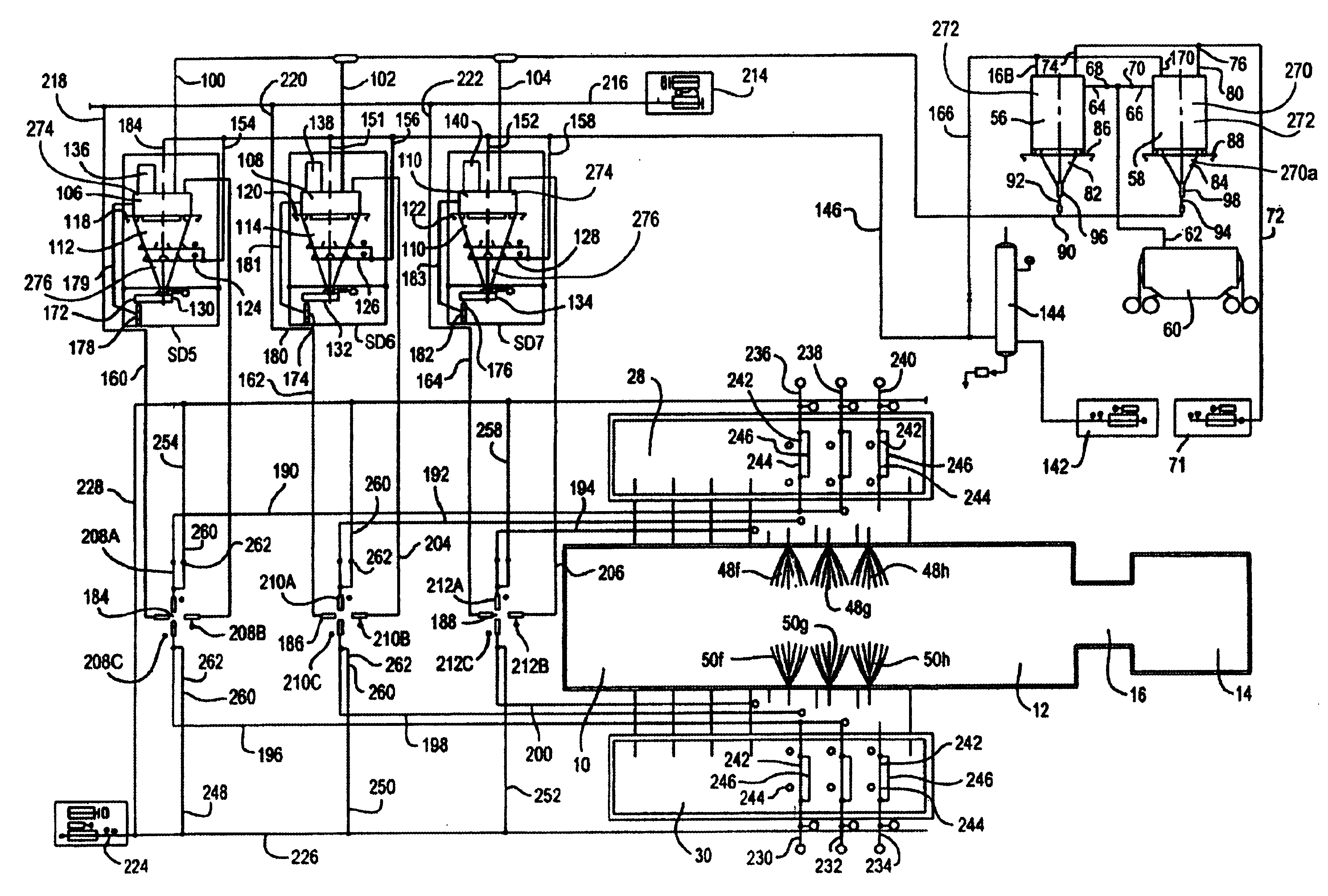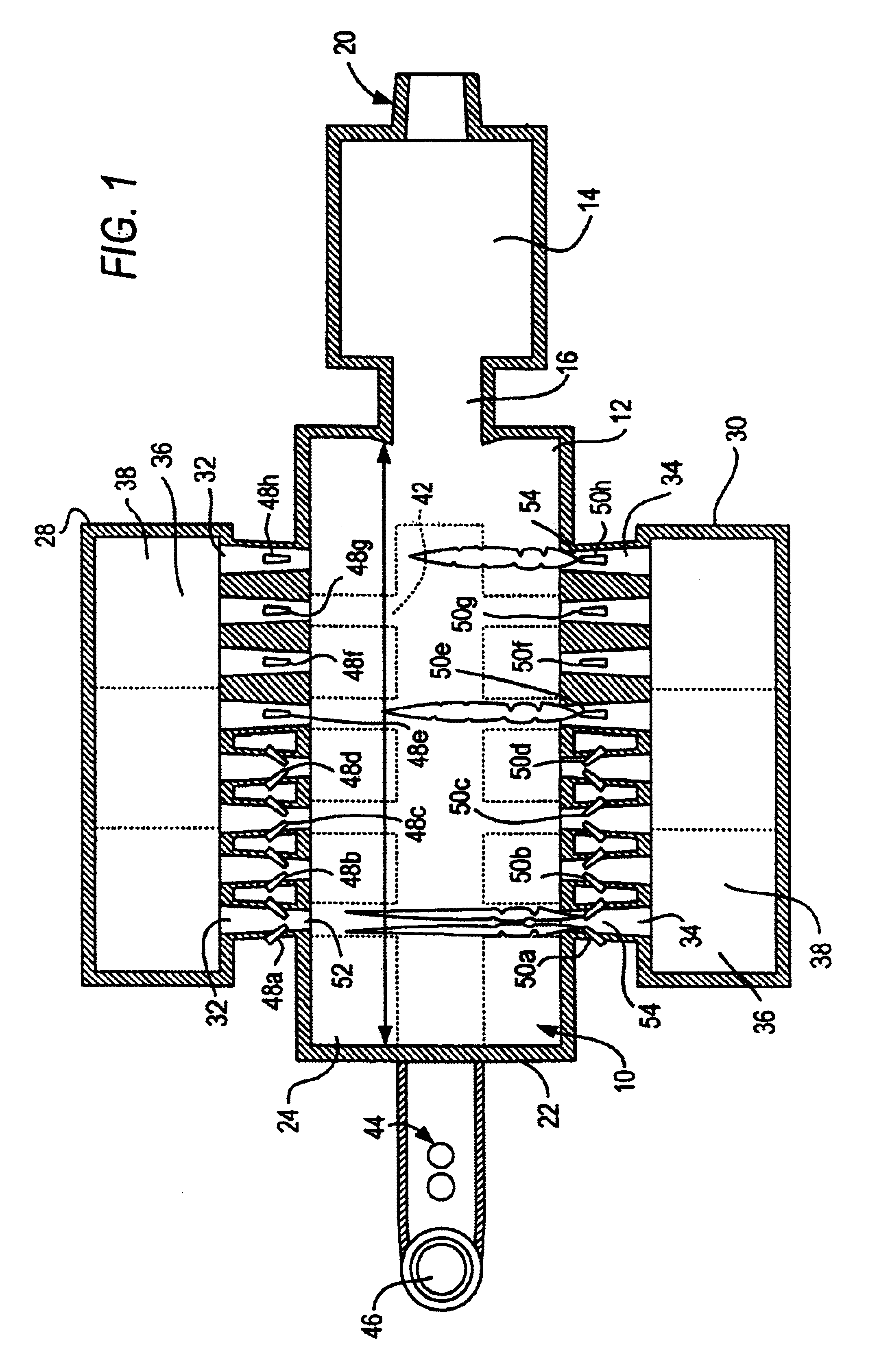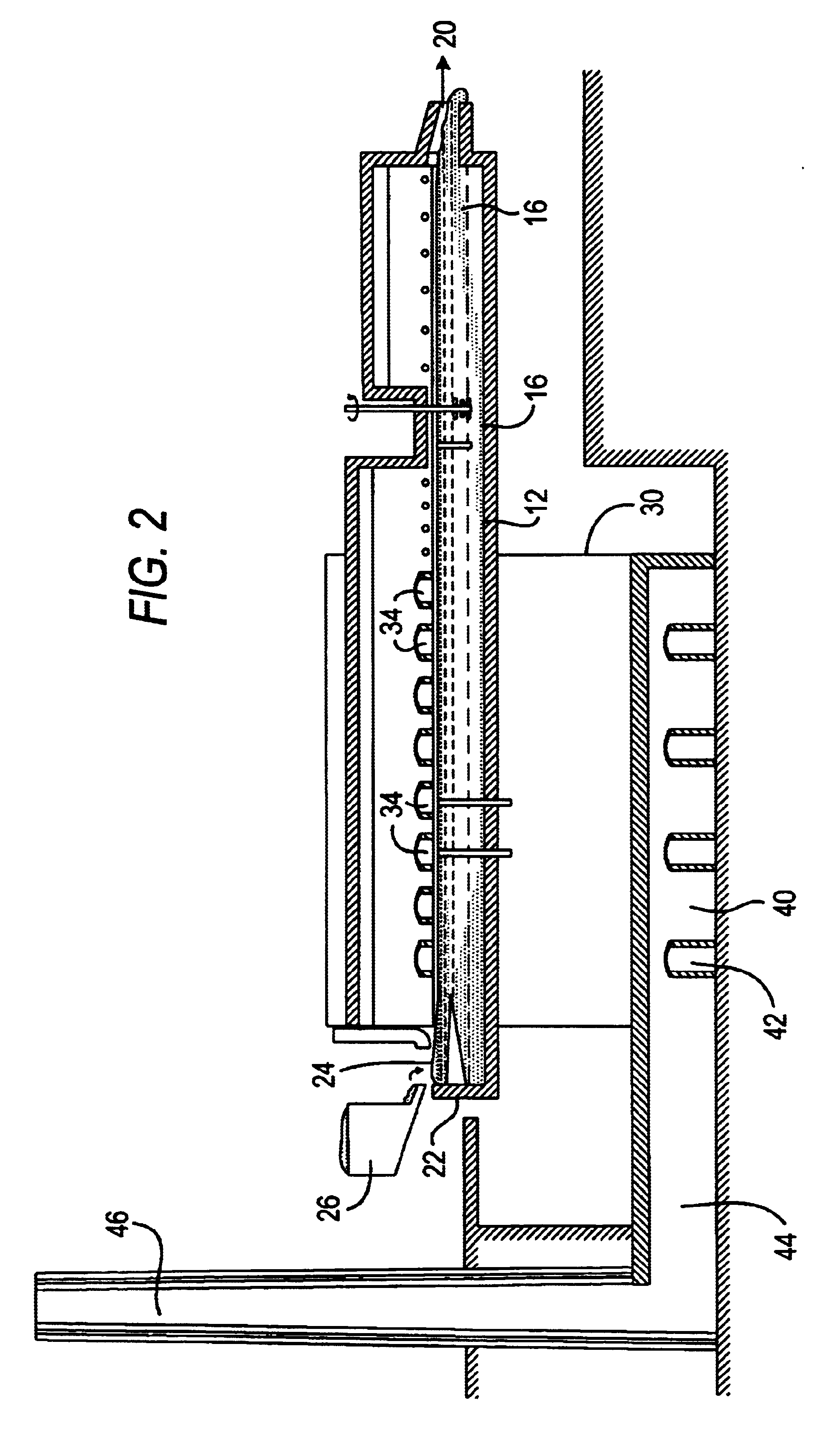Control system for controlling the feeding and burning of a pulverized fuel in a glass melting furnace
a control system and glass melting furnace technology, applied in glass furnace equipment, lighting and heating equipment, combustion process, etc., can solve the problems of inconvenient unit melter technology, inconvenient oxy-fuel process, and inconvenient oxygen itself cost,
- Summary
- Abstract
- Description
- Claims
- Application Information
AI Technical Summary
Benefits of technology
Problems solved by technology
Method used
Image
Examples
first embodiment
In a first embodiment, the pulverized fuel can be fed to the furnace in an intermittent sequence. In this case, in a first step, once that the combustion cycle has finished in one side of the furnace, the feeding of pulverized fuel to each of the burners,--for example burners 48f, 48g, 48h, by means of the pulverized fuel feeding systems SD-5, SD-6 and SD-7--are stopped. However, a continuous flow of the conveying air is maintained during a short period of time "as a purge" for cleaning purposes for that said pipes 192, 194 and 196. In this embodiment, the flow of the pulverized fuel is totally stopped in the pulverized fuel feeding systems SD-5, SD-6 and SD-7, meanwhile the combustion cycle is being changed from the burners 48f, 48g, 48h to the burners 50f, 50g and 50h to carry out a second combustion cycle. In this step, the furnace gates FG are open to initiate the feeding of pulverized fuel, for example toward burners 50f, 50g, 50h. In this second step, once the opposite side of...
second embodiment
In a second embodiment, the operation of the pulverized fuel feeding systems SD-5, SD-6 and SD-7, is maintained in a continuous form, in order to maintain a major and better stability in the feeding of the pulverized fuel to each of the burners. The arrangement is similar to previous example, but here is used the four-way valve 184, 186, 188 above described or a three way diverter valve that perform the same operation (not shown). Through this embodiment, the feeding of the pulverized fuel can be previously tested, calibrated and set up before said fuel be fed to each the burners 48a-to-h or 50a-to-h.
In this way, the air-fuel mixture that arrives through the third outlet pipes 160, 162, 164, is regulated by the four-way set of valves 184, 186 and 188 and ball valves 208A-to-C, 210A-to-C, 212A-to-C, for alternating the injection of the air-fuel mixture between the burners 48a-to-h and 50a-to-h. So, during the cycle change, meanwhile the furnace gates FG are being opened to initiate t...
PUM
| Property | Measurement | Unit |
|---|---|---|
| temperatures | aaaaa | aaaaa |
| residence time | aaaaa | aaaaa |
| temperature | aaaaa | aaaaa |
Abstract
Description
Claims
Application Information
 Login to View More
Login to View More - R&D
- Intellectual Property
- Life Sciences
- Materials
- Tech Scout
- Unparalleled Data Quality
- Higher Quality Content
- 60% Fewer Hallucinations
Browse by: Latest US Patents, China's latest patents, Technical Efficacy Thesaurus, Application Domain, Technology Topic, Popular Technical Reports.
© 2025 PatSnap. All rights reserved.Legal|Privacy policy|Modern Slavery Act Transparency Statement|Sitemap|About US| Contact US: help@patsnap.com



